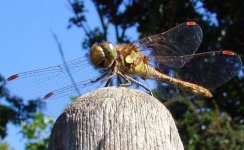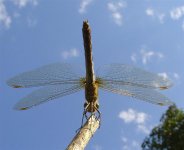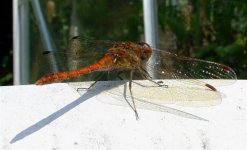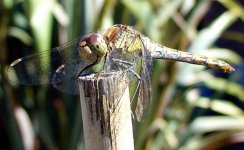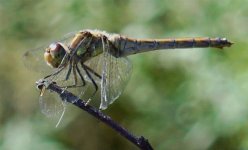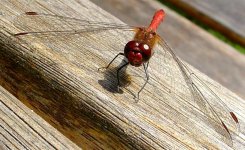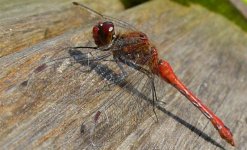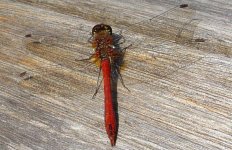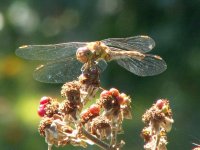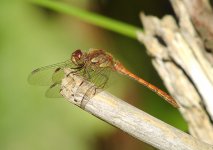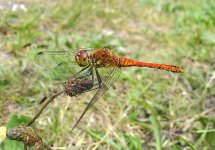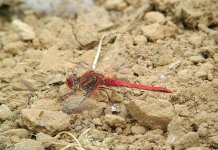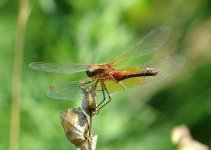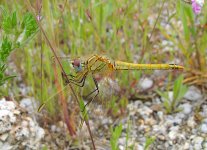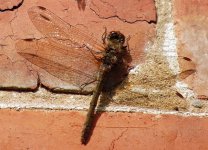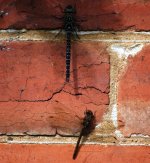Yes, this website is excellent. If you go back a level or two to http://www.brocross.com/dfly/dfspec.htm then you will find comparisons of all the species that have been mentioned here.
All of Matt's photos are Common Darters; numbers 1-3 & 5 are females (some starting to age to a rather male-like colouration), while 4 is a male. The way to sex them is by the anal appendages at the end of the abdomen: in Darters and related species males have two strong 'claspers' that curve gently inwards then run parallel to the centre line, while females have two weak spine-like structures either side of a central bump.
The most commonly encountered Darters are Common Darter, Ruddy Darter and Black Darter, though this is rather local in central and eastern England. Yellow-winged Darter is a rare migrant that most people are unlikely to see, except perhaps during 'influx years', the most notable recent one being 1995 (though 2006 wasn't bad). Red-veined Darter used to be even rarer, but is now becoming noticeably more frequent, probably as a result of global warming. They tend to hang out on shallow waters near the coast or at inland gravel pits, and active observers might just come across them from time to time. There were indeed several records from Lincolnshire (amongst other places) last year.
Adrian
All of Matt's photos are Common Darters; numbers 1-3 & 5 are females (some starting to age to a rather male-like colouration), while 4 is a male. The way to sex them is by the anal appendages at the end of the abdomen: in Darters and related species males have two strong 'claspers' that curve gently inwards then run parallel to the centre line, while females have two weak spine-like structures either side of a central bump.
The most commonly encountered Darters are Common Darter, Ruddy Darter and Black Darter, though this is rather local in central and eastern England. Yellow-winged Darter is a rare migrant that most people are unlikely to see, except perhaps during 'influx years', the most notable recent one being 1995 (though 2006 wasn't bad). Red-veined Darter used to be even rarer, but is now becoming noticeably more frequent, probably as a result of global warming. They tend to hang out on shallow waters near the coast or at inland gravel pits, and active observers might just come across them from time to time. There were indeed several records from Lincolnshire (amongst other places) last year.
Adrian




